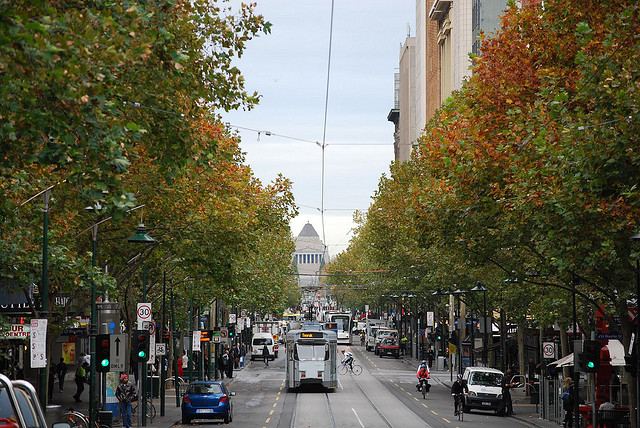How will Melbourne combat climate change?
MELBOURNE plans to improve sustainability in the city by becoming carbon neutral by 2020. Anthea Batsakis explains how international students and Melbourne residents can help to improve sustainability in the city.
Despite Prime Minister Tony Abbott’s infamous declaration of climate change as “absolute crap” and his reluctance to include the topic at Brisbane’s recent G20 Summit, Australian cities are doing more to embrace a sustainable future. The City of Melbournehas formed the ambitious goal to have Melbourne become carbon neutral by 2020.
While it’s true that Australia is lagging behind its climate-conscious allies, it’s important to recognise the actions that Australia is taking from inside its cities in the face of a tumultuous climate.
We don’t need to fall into despair over the lack of global participation, as we can encourage the changes that will pave the way for our cities’ sustainable future.
The ongoing development of major cities is one of the key factors that cause carbon dioxide to be released into the atmosphere at such alarming rates. Cities are massive pollution forces that continue to grow as the Earth’s population approaches a staggering nine billion.
By 2051, Melbourne will have to accommodate a population of more than 7.7 million, with 1.7 more jobs needing to be established.
So how can we support this growing population and still keep the planet sustainable? The City of Melbourne has outlined some of the ways in which to do so, all of which can be accessed in detail at their official website.
Urban Forest Strategy
In an attempt to create a city within a forest, Melbourne’s tree canopy will double by 2040. Currently, Melbourne’s tree population of 22 percent is projected to increase to at least 40 percent coverage by 2040.
Melbourne’s lush tree canopy contributes heavily to its status as the world’s most liveable city. But these trees, parks, and the biodiversity are under threat from the heatwaves, severe droughts, and extreme floods that Melbourne will no doubt endure as a result of a changing climate.
Combined with an aging tree population, the city’s 70,000 strong tree population is expected to drop by 44 percent in the next two decades. So it’s important that we act now and quickly to reverse this dramatic loss.
New Technologies
Combatting climate change may lie in the form of new technologies.
Green roofs, walls, and facades, together with cool roofs, are just a couple of the ways Melbourne will reinvent itself with the focus of sustainability.
A green roof is a roof that supports plant growth. The roofs that are literally green with vegetative cover can already be seen on the tops of buildings in Melbourne. Other than looking pretty, they serve many beneficial purposes like reducing storm water drainage and helping to insulate buildings.
A cool roof reflects the sun’s heat, reducing the amount of heat transferred into the building. It can be compared to how a white car is cooler than a black car (although a black car is still pretty cool!).
What can I do?
Incorporating sustainability into your lifestyle can seem challenging, especially if you live in the city. If you want to help steer the city towards a carbon neutral future, there are several ways you can achieve this.
70 percent of residents in the city live in an apartment, so keeping your apartment sustainable can make a real difference to the overall sustainability of the city.
And if you live or work in a laneway, you can turn it green! Living in the city limits the amount of space that you have for a garden, so you may need a little imagination. The guide Green Your Lanewayinforms you on how to build a plant community in your space; ranging from wall creepers, to your balcony, window sills, and steps.
Greening your laneway has many benefits, from providing insulation and reducing noise levels to filtering pollution from the air. You can find out which plants best suit the laneway environment and also find out what grants and funding options are available.
As this is an urban twist on the traditional garden, it’s important to find the right resources to guide you on your way to a greener laneway. The forum Sustainable Gardening Australia and the book The Everything Small-Space Gardening Bookby Catherine Abbott are great places to start.

